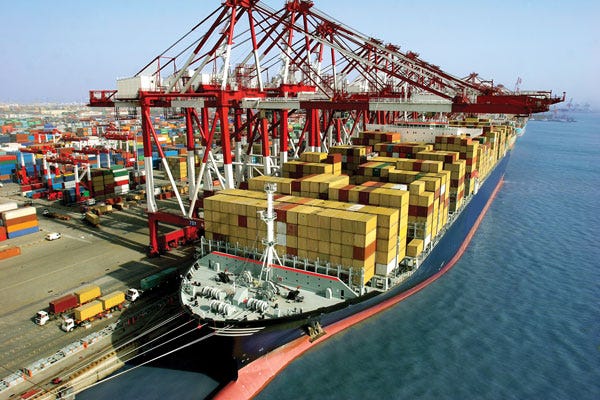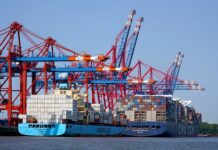
Across multiple industries, the Internet of Things (IoT) is the talk of the town. Concepts, use cases, platforms — you name it. In an era of rapid technological developments, companies are turning their attention to the seemingly endless opportunities of IoT to improve productivity, reduce costs, gain a competitive advantage, and more.
But it’s the path to maturity where a fog has quickly settled. There’s no defined framework for any one industry or operation where IoT technology can be effectively designed, implemented and make a big, long-term impact.

Scott Amyx, Founder and CEO of Amyx+, is a recognized subject matter expert on the IoT, having been featured on publications including the New York Times, TIME, Forbes, The Washington Post, WIRED, and TechCrunch.
He spared time recently to chat with us about what an effective approach should incorporate when it comes to adopting an IoT solution.
______________________________________________________
The problem that we’re seeing in industry, is a tendency to treat IoT as a new shiny thing. But new shiny things have to do something meaningful.
If an industry struggles with the value proposition in the context of IoT, that’s a sufficient trigger for one to realize more planning and analysis are needed.

For manufacturing, to say that you can predict when a particular mechanical component will be faulty and needs to be replaced, so there’s no downtime, is obvious.
But is that enough of a trigger for a manufacturer to say, “We’re going to fully commit to an IoT implementation because we think that’s significant value”? I think most everybody would agree that there’s efficiency, productivity, and economic gains from IoT, but it’s the way you position it, implement, and maintain that would determine the magnitude of return on investment. More and more, enterprises are looking for 10–20x return on savings or revenue lift.

The journey starts with going back to leadership and understanding your sector and company needs. For utilities, for instance, what are their biggest drivers? Is it compliance, regulation, maintenance, provisioning or service? Can those pinpoints be structured in a way that IoT can help solve or increase revenue or decrease costs?
That’s the key focus. And again, it has to go back their sectors and their specific firm goals and objectives. Otherwise, a bunch of shiny things is rendered meaningless.
I was recently contacted by a company that’s essentially a pricing marketer. There’s an entire industry around just pricing, and the region of disputation of utility services, commodity, and the spot markets. What I’m talking about relates to several things, but one, in particular, is optimized pricing models.
Data analytics can give you better insights and better modeling so that you’re able to tie the supply side with demand. IoT is not only helpful on the production side but can be very helpful on the consumer side. It’s more than simply metering.
Moving Beyond Tactics to Strategy

From the perspective of ‘smart’ cities, most of the implementations like metering relate to the utility industry. This is a very tactical approach rather than a strategic one at present. The industry is going through some major changes, particularly with the push from Tesla and SolarCity.
There is momentum to allow for households to create energy, become a power plant that can distribute energy back to the support grid. It’s not something utility companies are worried about in terms of disruption — not yet, at least.
But to create the right roadmap to IoT maturity, companies need to look at the core mission of what their organizations are trying to do: changing customer behavior, market landscape, competition, and supply and demand considerations.

In the case of oil, which has an impact on electrical generation, it’s estimated that Saudi Arabia will be fully depleted in about twenty-five years or so. What does that mean for utility companies in terms of being able to power electricity? Are they going to default to coal? Are they going to use more gas?
That’s where the ability to inform decision making based on the supply size of resources and forecasting of future dynamics can enable to them to stay relevant, competitive, and meaningful. At the end of the day IoT is about visibility and value-added services. Even if you can provide more visibility to consumers, that’s valuable to them.
Aligning all those things will help you determine exactly what the product might look like. Let’s take the the example of smart cities again. A lot of the smart city implementation has been around smart lighting and smart metering — very basic, innocuous types of initiatives. If you think about the mission of cities, certain cities may want to become a major economic trading hubs.

What does that mean in terms of being able to support a major trade such as shipping? That’s an example where you have to think about how to optimize, given a finite set of resources.
You can only add so many cranes for a shipyard. How do you optimize the operation of a shipyard? The cranes, logistics between the ships, docking, warehousing, trucking, and trains — that’s an example of an integrated way where data and IoT can work to deliver optimization. So, in a given set of finite infrastructure, it can actually increase output.
Similarly, going back to utility companies, how can they take existing infrastructure and optimize it so that they’re maximizing revenue, up-time and/or customer service?
Leveraging Open Data Initiatives
In the context of ROI, gas, oil, and electricity — some of these are public services, which means organizations have to make certain decisions not exclusively and solely on ROI. For example, open data initiatives.
Open data initiatives have been around for several decades, yet only about ten percent have successfully delivered any meaningful implementations and results.
The premise of open data initiatives is, when the government opens up its data and externalizes it, private entities can use that data for public good — including visualization and application development.

When the U.K. opened up its data for buses and trains, many applications emerged for commuters, such as Tube Map for London. That’s a great example of being able to use data to provide seamless, real-time information so people can have a better and more informed travel experience.
We have to look at what the responsibilities, mandates, and regulatory responsibilities are that need to be abided by, and understand how the transparency offered by IoT can help in those areas.
Enabling Real-Time Data Analytics
Back to the concept of smart cities, if you think about electric lines that cover thousands upon thousands of kilometers — to rely on people reporting certain outages is very archaic. You should be able to know where certain sections are not only out, but which sections are sub-optimal.
Perhaps IoT data shows a reduction in efficiency in transmission of electricity or some energy loss — could that be an indicator of deteriorating infrastructure or assets that need to be replaced?
Preemptive transparency of assets and wider infrastructure will be very important, both on the cost and revenue sides. There will be new business models, and there will be new revenue sources.

In the construction industry, some unique IoT developments have emerged by way of implementing piezoelectric sensors into concrete composites, which enable an energy-independent, wireless mesh network system that captures information in real-time across different infrastructure assets.
For civil engineering and construction firms, in addition to building a project, you can provide IoT data analytics and data visualization for organizations like a bridge authority or local municipalities. Now, these authorities and agencies can subscribe to a new SaaS or PaaS offering that gives them visibility over how those assets are doing.
If there’s an earthquake, for instance, how did that earthquake impact the infrastructure, and was there any seismic impact that should be investigated further? The sensors embedded into the concrete composites would quantify its post-earthquake condition.
It’s an exciting time for IoT. As a strategist, I need to be clear and state that never should an organization lead with technology first. It all starts with the business strategy and defining the drivers for IoT.
Originally published on the Energy Conference Network: Talking IoT in Energy on December 19, 2016.


















